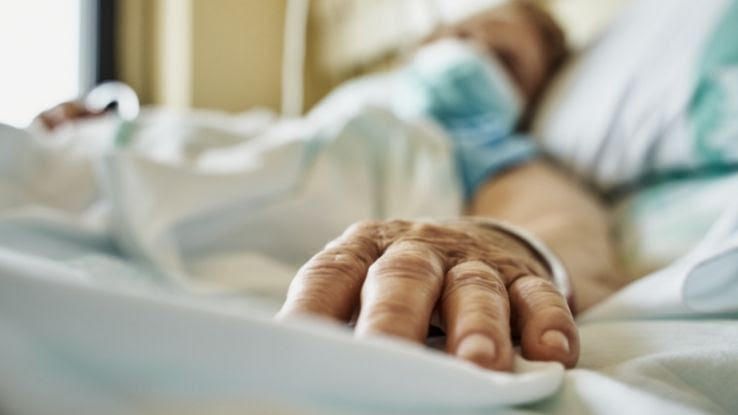The Pacific Prime Ideas
The Pacific Prime Ideas
Blog Article
Pacific Prime Things To Know Before You Buy
Table of ContentsUnknown Facts About Pacific PrimePacific Prime Fundamentals ExplainedPacific Prime - QuestionsPacific Prime Fundamentals Explained3 Easy Facts About Pacific Prime Shown

This is since the data were accumulated for a period of strong economic efficiency. Of the approximated 42 million individuals that were uninsured, almost concerning 420,000 (about 1 percent) were under 65 years of age, the age at which most Americans come to be qualified for Medicare; 32 million were adults between ages 18 and 65, around 19 percent of all grownups in this age; and 10 million were children under 18 years of age, concerning 13.9 percent of all kids (Mills, 2000).
These estimates of the variety of individuals without insurance are created from the annual March Supplement to the Current Population Survey (CPS), performed by the Demographics Bureau. Unless otherwise noted, national quotes of individuals without medical insurance and percentages of the populace with various kinds of protection are based upon the CPS, one of the most extensively used source of quotes of insurance protection and uninsurance prices.
8 Simple Techniques For Pacific Prime

Still, the CPS is specifically useful because it produces annual estimates relatively quickly, reporting the previous year's insurance protection approximates each September, and since it is the basis for a constant set of price quotes for greater than two decades, enabling for analysis of trends in insurance coverage over time. For these reasons, as well as the extensive use the CPS in other research studies of insurance protection that exist in this record, we depend on CPS price quotes, with limitations noted.

The quote of the number of without insurance people broadens when a populace's insurance status is tracked for numerous years. Over a three-year duration starting early in 1993, 72 million individuals, 29 percent of the U.S. https://www.dreamstime.com/pacificpr1me_info. populace, were without insurance coverage for at the very least one month. Within a solitary year (1994 ), 53 million people experienced at least a month without insurance coverage (Bennefield, 1998a)
6 out of every ten without insurance adults are themselves used. Although functioning does improve the likelihood that and one's member of the family will certainly have insurance coverage, it is not an assurance. Even participants of households with 2 permanent wage income earners have nearly a one-in-ten possibility of being uninsured (9.1 percent uninsured rate) (Hoffman and Pohl, 2000).
Things about Pacific Prime
New immigrants make up a significant percentage of people without wellness insurance policy. One analysis has attributed a considerable part of the current development in the dimension of the united state uninsured population to immigrants who showed up in the nation in between 1994 and 1998 (Camarota and Edwards, 2000). Current immigrants (those that came to the United States within the past four years) do have a high rate of being uninsured (46 percent), yet they and their children represent simply 6 percent of those without insurance nationally (Holahan et al., 2001).
The partnership in between medical insurance and accessibility to care is well developed, as recorded later in this chapter. Although the partnership in between medical insurance and wellness end results is neither straight neither straightforward, a substantial clinical and health services study literary works links medical insurance protection to better accessibility to care, far better quality, and improved personal and population wellness status.
Levels of analysis for taking a look at the results of uninsurance. This discussion of medical insurance protection concentrates mainly on the U.S. population under age 65 because basically all Americans 65 and older have Medicare or various other public coverage. Check This Out Furthermore, it concentrates particularly on those without any medical insurance for any kind of length of time.
The Only Guide to Pacific Prime
The issues faced by the underinsured are in some respects similar to those dealt with by the uninsured, although they are typically less serious. Health and wellness insurance policy, nonetheless, is neither needed neither sufficient to get accessibility to medical services. The independent and direct impact of wellness insurance protection on access to health services is well developed.
Others will get the healthcare they require even without medical insurance, by paying for it expense or seeking it from carriers that offer treatment cost-free or at extremely subsidized rates. For still others, health and wellness insurance alone does not make sure receipt of treatment as a result of various other nonfinancial barriers, such as a lack of wellness care companies in their community, limited accessibility to transportation, illiteracy, or linguistic and cultural differences.
An Unbiased View of Pacific Prime
Formal research study about uninsured populaces in the United States dates to the late 1920s and early 1930s when the Committee on the Expense of Treatment generated a series of reports about funding medical professional office visits and hospitalizations. This problem came to be salient as the varieties of medically indigent climbed throughout the Great Anxiety.
Report this page